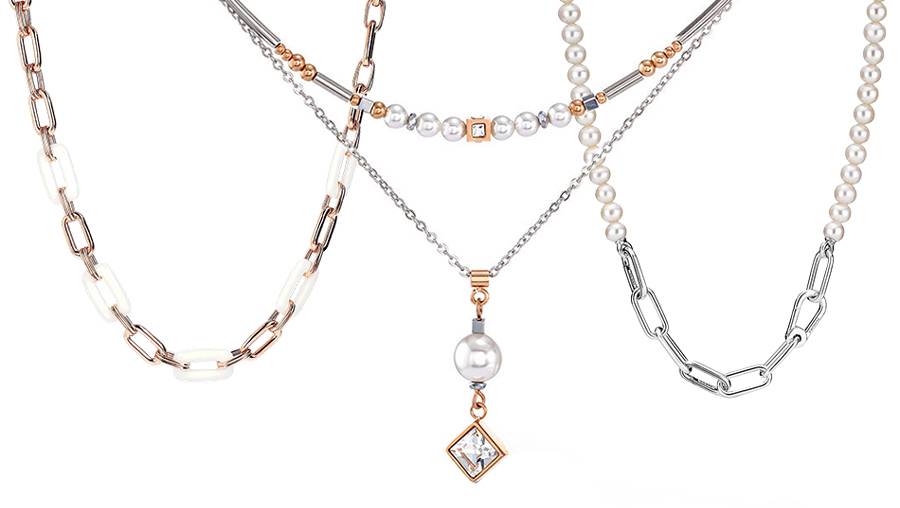Confused? Well, that’s because people often think that jewellery is like any other consumer category, however; for a long time the jewellery industry was very different.
For example, consider sporting goods; where almost every product is chosen by brand name. The same goes for cars, technology, and just about any other consumer good these days – brands have always held power
However, the jewellery industry was a latecomer to the branded phenomenon.
And for consumers it’s a little hard to understand because there is a difference between a ‘jewellery brand’ – such as Cartier, Tiffany, Graff, or Chopard – and ‘branded jewellery’.
‘Jewellery brands’ usually operate as a vertically integrated business model, not as part of a wholesale (massdistribution) model. For example Tiffany, one of the world’s most iconic brands, is sold exclusively from company-owned stores. The same goes for Cartier, Chopard, and Graff.
In other words, the distribution is through a retail model, not wholesale, which means that independent jewellery stores can choose to stock branded jewellery, but they cannot choose to stock Tiffany. And that’s where the confusion lies; branded jewellery - as a product - is considered a category.
|
 |
| Cartier |
| |
 |
| L to R: Bronzallure, Coeur De Lion, and Pandora |
|
The evolution of branded jewellery
As a marketing concept and product category, branded jewellery is generally considered to have gained traction with Pandora in the early-mid 2000s, which operated as a wholesale distribution model, even though it now has its own retail outlets.
Which brings us back to why branded jewellery is a relatively new phenomenon to the industry, even though all other consumer categories have been driven and dominated by brands for a long time.
Just to confuse things a little more, watches have always been about brands. Indeed, it was only 10-15 years ago that a typical jeweller’s store window featured unbranded gold and diamond jewellery to the left of the door, and to the right of the door the window was full of watches - all branded.
Consumers selected and purchased watches solely on ‘brand’, while jewellery had no branding at all.
It was thought that small items could not clearly feature brand names for identification, so why bother? Inversely, a watch face could feature the brand name. But how do you highlight a brand on a necklace, bracelet, or ring?
Of course, that was an early notion of branding. To be fair, branding has evolved in a sophisticated manner over the past 20 years, from simply slapping a big label or logo on an item, to selling the aspirational lifestyles associated with the brand.
While it’s almost impossible to measure, Australia was most likely one of the first countries to launch headlong into branded jewellery when Pandora started to capture the attention of consumers. It has often been said that Pandora’s distribution and marketing strategy in Australia largely became the model for the company’s worldwide expansion.
Not only did the Pandora Phenomenon launch the company into superstar status – and according to some, one of the largest jewellery brands in the world today – it also catalysed the launch of many other brands, which effectively became its competitors. Each attempted to emulate Pandora’s marketing and distribution model.
Call them look-alikes or copycats, retail jewellers have had to contend with a plethora of fashion brands coming and going over the last decade. Think Chamilia, Trollbeads, Tuskc, Endless Jewellery, Ole Lynggaard, Alex and Ani, and so on, just to name a few.
Each, effectively, left Australia or failed for varying reasons. However, this taught retailers a valuable lesson in becoming more selective about stocking overseas brands that can sometimes misunderstand or miscalculate the local market.
The international and local brands that remain today have filled the gaps left by those that have collapsed and have proven themselves to be timeless. They continue to demonstrate the value and relevance of the branded jewellery category to the stockist.
To stock or not to stock?
The biggest change in the past decade is that retailers now readily recognise the many benefits to stocking branded jewellery: a ready-to-sell product with unique and popular designs, a tailor-made customer base of seasoned ‘brand fans’, timely new collection launches alongside consistently popular ‘bread-and-butter’ lines, high-quality marketing and merchandising materials for both online and in-store retail, and repair and replacement support.
The promise is simple: a brand will draw new customers to your store and deliver on fresh product with consistent marketing and support.
Having said that, stocking branded jewellery becomes a balancing act. Whether to stock the category is a decision that every retail jeweller will consider at some stage, not to mention the question of how much of one’s inventory a brand should occupy and which brands are appropriate to stock.
Amid the constantly shifting tides of consumer tastes and trends, the retailer must also pay frequent attention to stock performance, marketing, and customer feedback. Yet, for seasoned navigators the rewards are bountiful.
Of course, the success of a brand’s performance in a retail store is a two-way street. The retailer must consider the price and margin, brand image and marketing, and extent of supplier support and must be willing to meet the brand half-way to fulfil its sales requirements. With all the benefits also comes commitment.
And while the industry has leveraged the opportunities of branded ranges for years, the category does not come without challenges brought about by the pandemic. The past two years have played a significant part in the progress of the branded jewellery category.
Changing conditions, changing market
Justin Veil, managing director of Designa Accessories, believes that branded jewellery is no longer just disposable fast fashion and that it must have a strong value proposition across product design, pricing, and distribution.
“The category has evolved and changed - increasing entrants into the space using a variety of fabrications has resulted in broader acceptance and also improved the perception of branded jewellery to make it a more viable proposition for customers and retailers who would have previously only considered fine jewellery.
“Expansion of stand-alone stores for many branded jewellery concepts has also helped broaden acceptance of the category for consumers and also tap into customer segments who may not have been shopping in traditional jewellers,” Veil says.
Phil Edwards, managing director Duraflex Group Australia agrees that the category has come a long way since he first introduced Thomas Sabo to Australia. (read story Through Turning Tides).
“There is no doubt that branded jewellery has simply evolved to be an integral part of the jewellery trade and has enjoyed significant growth as it has become more entrenched in the market. The shift in distribution strategy by some of the global brands has driven significant change,” Edwards says.
The increasing influence of social media has played an important part in the growth and reach of brands says Rachael Abbott, manager of marketing and merchandise at Time Supply
“There has been such a huge increase in social media, especially during COVID, customers are very focused on what is the latest trend and what they see online. They want to be seen to be a part of it,” she explains.
“There is definitely a focus on personalised jewellery especially on a brand such as Nomination, where people can express their personal identity, celebrating special moments in life.”
The personalisation aspect is not unsurprising given that the success of the category was largely built on the notion.
“Branded jewellery is very much about self-expression, particularly among our core demographic of 18 to 35 year old females. This expression is a huge part of their identity, and with branded jewellery this can be communicated easily, and with confidence even when the rest of their fashion/look is expected to be restricted,” says Karen Ridikas, director of Couture Kingdom.
“The importance of this self-expression and having ways to communicate your passions and ‘fandoms’ - we believe - has strengthened this category. Plus, we are seeing young men increasingly part of our consumer base, too, due to the rise in dominant common pop culture sectors across a multitude of medias and experiences,” she adds.
That said, in more recent times the branded arena has also expanded from the ‘fashion focused’ product into the fine jewellery category, which is rather ironic given that in the early days many retailers looked down upon Pandora for being cheap ‘costume’ jewellery.
Today, branded jewellery collections encompass high-end to fashion designs that include diamonds, colour gemstones, platinum and sterling silver. While branded jewellery was often associated with the fashion category, today it has no bearing on materials.
Chris Soklich, director Ellendale Diamonds, points to changes that only a few years ago would not have been considered relevant to the category
“Consumers are more socially aware; sustainability and credibility are key focuses. They want to be informed and can compare brands more readily as access to marketing is available now across multiple platforms at any time,” Socklich explains, adding, “brands - more so than ever - build a presence through offering a lifestyle.”
Someone who has seen a lot of change throughout the industry - and in particular the branded category - is Steve Der Bedrossian, managing director SAMS Group. Having recently entered the market with a new collection of Australian sapphire jewellery following the success of branded pink diamond jewellery Blush Pink, he believes that COVID assisted many local brands to gain prominence as they sought stock and support from suppliers closer to home.
“People are now more focused on timeless pieces with longevity, quality, and aesthetics. The pandemic has also changed purchase habits, as Australian consumers are now more likely to seek locally made products, so this must be a core focus for marketing and branding when products are positioned at a higher price.”
It ain’t going anywhere
There was a time where industry pundits predicted that branded jewellery was a fad - something that would fall by the wayside - but those days are long gone. The category is well entrenched in the jewellery industry today and while it may not be for all retailers, the arrival of new brands with a diverse offering will continue, albeit perhaps a little slower in a postCOVID world.
That said, there are many reasons why astute retailers will look towards a sensible offering of branded products within their own niche.
“Brand confidence and trust from consumers is important when they are purchasing a luxury good, such as jewellery, as in order to gain loyalty the brand must deliver in all aspects including design, quality, and service,” Der Bedrossian explains.
“Creating relationships with customers can drive exposure and brand awareness, only gained when branding is strong and drives products and design,” he adds.
“Brands that focus on their customers’ emotions and identities instead of their product’s unique features, have a better chance of building brands that inspire love,” Abbott says.
She adds that retailers can use this “knowledge to engage with their customers and potential customers, to inspire loyalty, and to entice customers into their store - whether physical or online. Retail has become so much more than just offering a place to purchase an item, it is about offering great service, advice and excellent brands.”
Soklich echoes Abbott’s thoughts: “Through the experience of our Desert Rose diamond jewellery brand, retailers report an additional level of prestige to their store. We promote trust and emotional connections with the retailers’ clients, which can attract a more varied and newer client base. It also retains the interest of the retailer’s existing clients, with upcoming collections as the brand evolves.”
Interestingly, Ridikas believes pop-culture is an important advantage for retailers: “The strong presence of pop-culture in fashion makes branded jewellery very attractive for retailers. The advantage of having brands as part of a retail strategy is being able to leverage off-quality imagery, marketing, content, and brand recognition.
Edwards is often contacted by international brands seeking an Australian distributor and today he is more selective in his approach.
“Retail partners now understand the value of quality branded jewellery and never before has it been more important to maximise the advantages than right now. The appeal of branded jewellery continues, particularly that of international brands, luring customers into stores, which provides them with the opportunity to increase their own sales, whilst leveraging the brand’s profile and consumer demand for the product,” Edwards advises.
Today, with the diverse offering of branded jewellery, a retailer can take advantage of a brand’s story and use it to enhance their own retail story with marketing material that helps to accentuate their jewellery offering. No longer do brands serve to compete with other stock, but rather, it has evolved to sit alongside and accentuate the store’s other offerings.
With striking product and beautiful marketing material, branded jewellery – from fashion to fine – can help drive a more powerful message which in turn helps attract more customers for retailers looking to increase overall sales.
THE KEYS TO SUCCESSBuilding a successful brand often needs deep pockets, but what are other key factors to success? |

Rachael Abbott
Timesupply | | » Engagement & Store traffic
“Brands can offer ‘plug-and-play’ sales opportunities for the retailers and profit from the highly-developed jewellery designs and international marketing strategies and tools which are also made available to retailers to use in-store at very minimal investment. UNOde50 for example, has 325,000 followers on Instagram and 432,000 on Facebook. This shows how interested the consumer is in the brand. Promoting the brand, not just the jewellery, drives customers into stores - bricks and mortar and/or online, resulting in sales not only of the brand, but also in other stock items and services. Brands help create store traffic and repeat visits and purchases.” | | 
Steve Der Bedrossian
Sams Group | | » Quality & Trustworthiness
"Success is rooted in brands offering a comprehensive marketing plan, which supports their brand mission and core values in an accessible way for consumers. Quality, designs, and a clear target market help to create this external. Beyond creating a trustworthy and appealing brand, deliver high-quality products engineered to consistently impress your specific group of consumers." | | | | 
Phil
Edwards
Duraflex Group | | » Target market & Service
"Whilst COVID has created some difficult challenges for everyone, this has highlighted the importance that retailers have a solid understanding of who their customer base is and catering to them with the right product mix/brands and range in-store. Not every brand is suitable for every store and we all need to focus on what we do best and our own unique point of difference. Ultimately, great customer service will always be a critical key to success – driving loyalty to ensure repeat business. Whilst the lockdowns of the past two years forced a shift in the path to purchase towards ecommerce (with many Retail Partners pivoting to make ecommerce an extension of their existing retail business) – jewellery is a unique category whereby many consumers still want the in-store personable shopping experience." | | 
Justin Veil
Designa Accessories | | » Leverage & Discernment
"Never lose sight of your customer. Brands might get them to the case, but you need to ensure product design that talks to the brand loyalist, as well as market trends, but trying to talk to everyone will ultimately make you resonate with no-one. Much like watches, a branded jewellery offering can complement a retailer's own manufactured jewellery and help attract customers into the store. Retailers can leverage the brand equity to engage consumers and cross-sell with their own products, increasing ATV and overall margins." | | | | 
Chris Socklich
Ellendale Diamonds | | » Innovation & Tradition
"Excel in all areas from service, product quality, delivery and aftercare. Show innovation in design, encompass current trends and feelings, yet retain a sense of the traditional to build a timeless brand. Excite and engage with the consumer to promote trust and loyalty. Be clear with your branding and strategies. Have a point of difference." | | 
Karen Ridikas
Couture Kingdom | | » Story-telling & Personality
"Retailers should offer brands that their customers and audience relate to currently (popular trends) but also, the storytelling nostalgic brands that always resonate. These stories/memories are key factors for purchasing, so it’s great a for a brand’s success and longevity in store. ‘Loved’ brands are key for consumer behaviour. Brands have a personality and evokes feelings that matter within the consumer." |
|
Read eMag